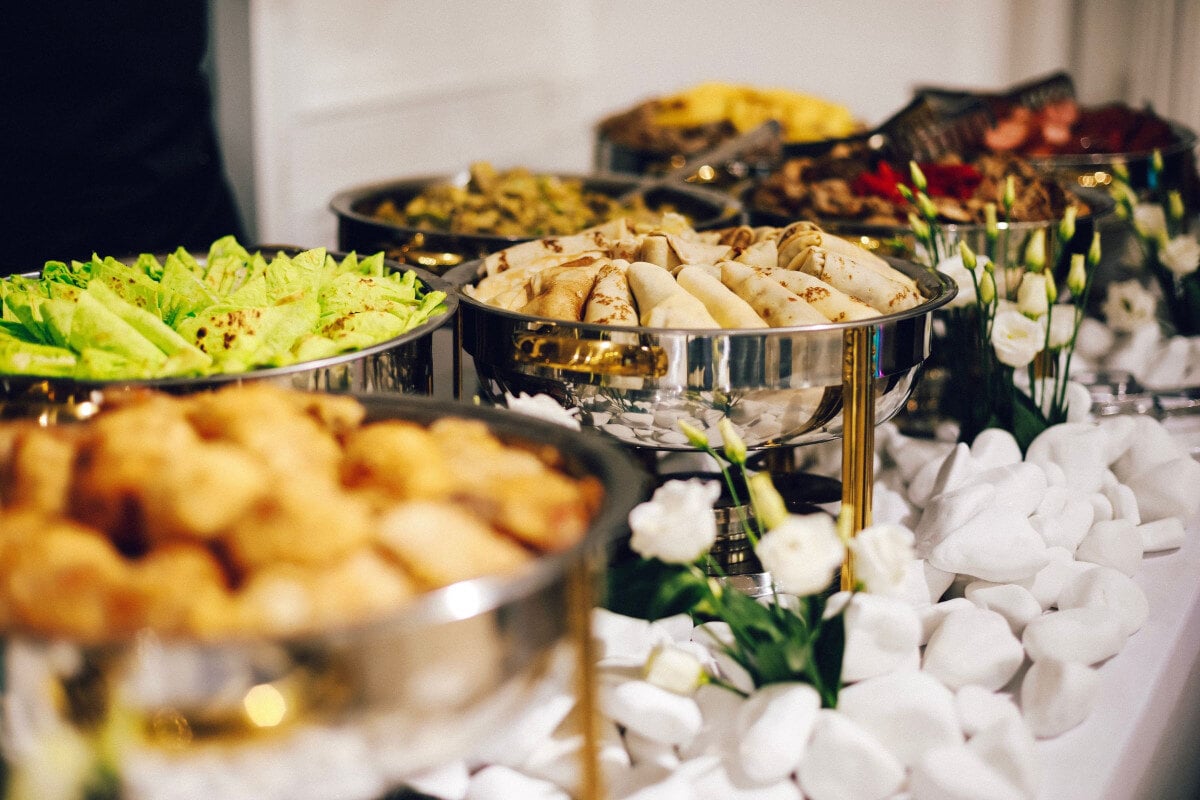16 min read
Catering Software and Platforms: 7 Features for Smooth Operations
The demand for integrated systems is growing across both digital and analog industries, and the catering sector is no exception. Catering platforms...
Platform
What is Paytronix Guest Engagement Suite?
Combining online ordering, loyalty, omnichannel messaging, AI insights, and payments in one suite. Paytronix delivers relevant, personal experiences, at scale, that help improve your entire digital marketing funnel by creating amazing frictionless experiences.
A Complete Guest Engagement Suite
Online Ordering
Acquire new customers and capture valuable data with industry leading customization features.
Loyalty
Encourage more visits and higher spend with personalized promotions based on individual activity and preferences.
Catering
Grow your revenue, streamline operations, and expand your audience with a suite of catering tools.
CRM
Build great customer relationships with relevant personal omnichannel campaigns delivered at scale.
Artificial Intelligence
Leverage the most data from the most customer transactions to power 1:1 marketing campaigns and drive revenue.
Payments
Drive brand engagement by providing fast, frictionless guest payments.
Solutions
Paytronix Guest Engagement Solutions
We use data, customer experience expertise, and technology to solve everyday restaurant and convenience store challenges.
FlightPaths are structured Paytronix software onboarding journeys designed to simplify implementation and deliver maximum ROI.
Customer Success Plans (CSPs) are tiered service offerings designed to help you get the most from your Paytronix software, whether you prefer self-guided support or hands-on partnership.
Contactless Experiences
Accommodate your guests' changing preferences by providing safe, efficient service whether dining-in or taking out.
Customer Insights
Collect guest data and analyze behaviors to develop powerful targeted campaigns that produce amazing results.
Marketing Automation
Create and test campaigns across channels and segments to drive loyalty, incremental visits, and additional revenue.
Mobile Experiences
Provide convenient access to your brand, menus and loyalty program to drive retention with a branded or custom app.
Subscriptions
Create a frictionless, fun way to reward your most loyal customers for frequent visits and purchases while normalizing revenues.
Employee Dining
Attract and retain your employees with dollar value or percentage-based incentives and tiered benefits.
Order Experience Builder
Create powerful interactive, and appealing online menus that attract and acquire new customers simply and easily.
Loyalty Programs
High-impact customizable programs that increase spend, visit, and engagement with your brand.
Online Ordering
Maximize first-party digital sales with an exceptional guest experience.
Integrations
Launch your programs with more than 450 existing integrations.
Loyalty Programs
Deliver the same care you do in person with all your digital engagements.
Online Ordering
Drive more first-party orders and make it easy for your crew.
Loyalty Programs
Digital transformations start here - get to know your guests.
Online Ordering
Add a whole new sales channel to grow your business - digital ordering is in your future.
Integrations
We work with your environment - check it out
Tobacco Reporting
Comply with AGDC 2026 DTP Requirements
Company
We are here to help clients build their businesses by delivering amazing experiences for their guests.
Meet The Team
Our exceptional customer engagement innovations are delivered by a team of extraordinary people.
News/Press
A collection of press and media about our innovations, customers, and people.
Events
A schedule of upcoming tradeshows, conferences, and events that we will participate in.
Careers
Support
Paytronix Login
Order & Delivery Login
Resources
Paytronix Resources
Learn how to create great customer experiences with our free eBooks, webinars, articles, case studies, and customer interviews.
FlexPoint Service Catalog
Access FlexPoints are a cost-effective, flexible way to access our value-added services, to ensure you get greater impact from your Access software solution.
See Our Product In Action
E-Books
Learn more about topics important to the restaurant and c-store customer experience.
Reports
See how your brand stacks up against industry benchmarks, analysis, and research.
Blog
Catch up with our team of in-house experts for quick articles to help your business.
Case Studies
Learn how brands have used the Paytronix platform to increase revenue and engage with guests.
Unlock loyalty strategies that 3 out of 4 restaurants use to boost engagement by 40% without adding staff.
6 min read
Jan 17, 2025

Smooth internal operations, a delicious menu, and top-notch service are among the essential ingredients of a successful catering business. Whether you have a large team or a one-person company, you strive to ensure guest satisfaction. You can accomplish this by leveraging catering customer relationship management (CRM) software.
The tool is a hub for everything from internal operations to engagement analytics. With proper implementation, it can help maximize your customer’s average order value (AOV) and lifetime value (LTV).
This article outlines the important features of a catering CRM tool, how to use them to your advantage, and tips for successful implementation.
Catering customer relationship management (CRM) software is a tool that helps catering businesses organize and analyze customer data. High-quality catering CRM software supports your company in these six ways:
Traditional contact management systems are simplified versions of a CRM catering software. Within it, you’ll find customer names, phone numbers, addresses, or other personal contact information.
However, traditional systems lack data-driven insights and the ability to analyze customer engagement. Catering CRM features cover these areas and go further.
Catering CRM features vary based on the software. To help you make an informed decision, these are seven core features to look for in any catering CRM software:
Average order value (AOV) is how much customers spend per order on average. Calculate it by dividing your total revenue by the number of orders. A CRM bolsters your AOV by providing key insight into customer trends and guest engagement.
Leverage these data points to source opportunities to upsell, cross-sell, and offer exclusive rewards to your clients. A satisfied client is more likely to stick with your catering business. These consistent customers have a strong lifetime value (LTV), which brings consistent revenue to your business.
With great CRM software in motion, increasing AOV is both strategic and straightforward. Use these five techniques to maximize AOV:
Upselling is one of the best ways to implement data and boost AOV. It works by presenting clients with order add-ons they might not have considered before.
For example, say one of your clients is placing an order online. Before they check out, you offer a list of potential add-ons based on their current order. These items could be extra sides, silverware, desserts, or anything else that may enrich their experience.
Additionally, cross-selling is another option to boost client satisfaction. Continuing with the earlier example, you might add a complimentary dessert sample to a client’s order if it reaches above a certain monetary threshold. In short, you add items that complement the client’s current order without an additional fee or at a discount.
To determine how much value a client brings to your business throughout the engagement, measure their lifetime value (LTV). You can boost LTV by improving client relationships in these four ways:
Your CRM tracks client engagement. You can personalize your offerings based on their preferences and interactions with your business. The better you serve each client, the more likely they will have a satisfying experience and become loyal customers.
Every business management platform you use generates valuable data. Your point of sale (POS) software captures how much a client spends and which goods or services they buy. Additionally, your financial software informs you how much you spend versus revenue so that you can calculate your total cost of goods sold (COGS).
It’s important to aggregate data across your entire technology network. Integrated software ensures accurate data. It reduces the risk of duplicates or missing metrics. Use these three tips to help ensure a seamless integration:
With your catering CRM software successfully integrated, the next step is incorporating its features into your day-to-day operations.
As you learn a new CRM tool, ensure you take ample time to learn its features. Keep these four best practices in mind when implementing your new catering CRM software:
No matter the size of your catering business, learning a new tool requires time and patience. To help you maintain a smooth process, these are three common pitfalls during CRM implementation and how you can resolve them:
While preparing for every potential challenge is close to impossible, you can develop a contingency plan for the most common ones. That way, if unique setbacks arise, you have plenty of time and resources to find a resolution. After proper implementation, you’ll soon have high-quality business insights.
Data from your catering CRM software grants you an insider’s look into your customer’s preferences, experience, and behavior. You can analyze and implement changes that enhance customer experiences, increase AOV, and boost LTV by tracking the right metrics. Use these three strategies to analyze CRM data:
Use your client data analysis to discover strategic upsell or cross-sell opportunities to increase the average order value. You can decide how to price your services, offer discounts or perks, and engage with clients based on their habits, boosting each customer’s lifetime value.
Advances in technology have the power to improve your current operations to boost revenue and client satisfaction. According to research published by Deloitte, customer spending increases 20% when ordering via technology.
However, the challenge is identifying these trends. Here are four key trends in catering CRM technology to help you get started:
Technological advancements support the improvement of internal operations, from placing orders online to accepting mobile payments. It additionally saves you time by automatically aggregating data, so you can make quality business decisions and stay ahead of the competition.
With proper implementation, catering CRM software has the potential to drive both business growth and revenue. The tool’s robust features spotlight opportunities to strengthen your services and build lasting relationships with clients.
Whether you’re aiming to boost average order value through strategic upsells or build a network of loyal customers to increase LTV, a quality CRM platform will get you there.
Ready to adopt an all-in-one CRM software to improve customer relations and boost profit? Book a demo to learn about our catering and CRM solutions.

16 min read
The demand for integrated systems is growing across both digital and analog industries, and the catering sector is no exception. Catering platforms...

11 min read
In the restaurant industry, efficiency is no longer a luxury—it’s a necessity. Streamlined operations improve your customer experience and result in...

15 min read
Fragmented software across different departments can lead to inefficiencies, miscommunication, and missed opportunities to act on real-time...